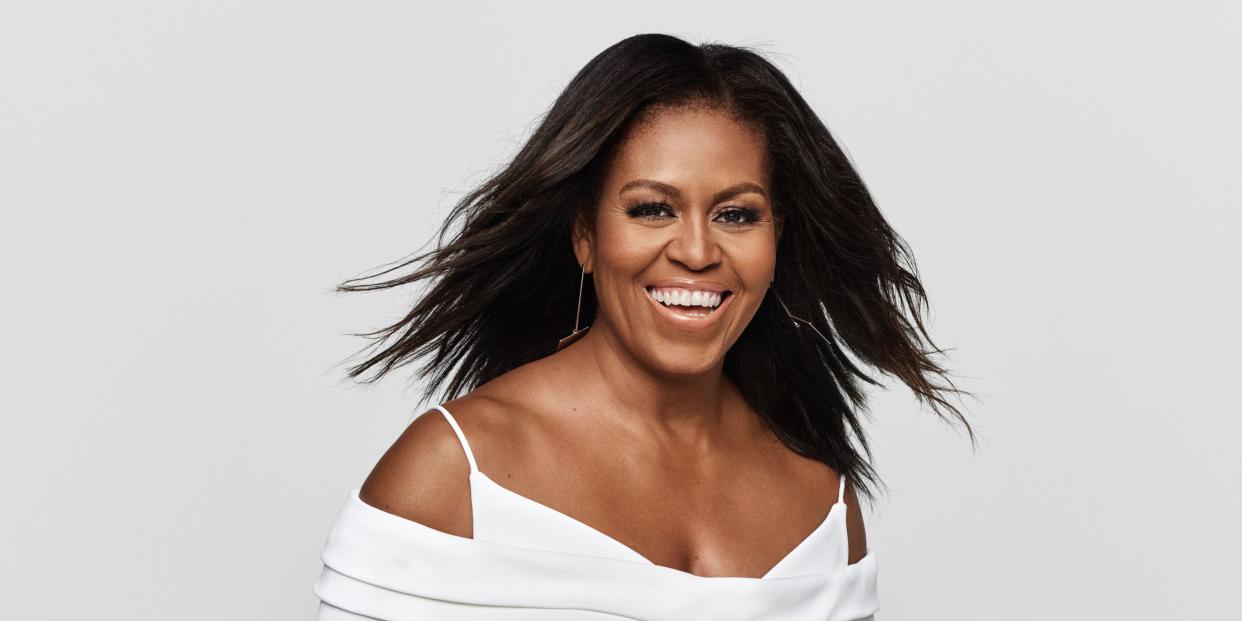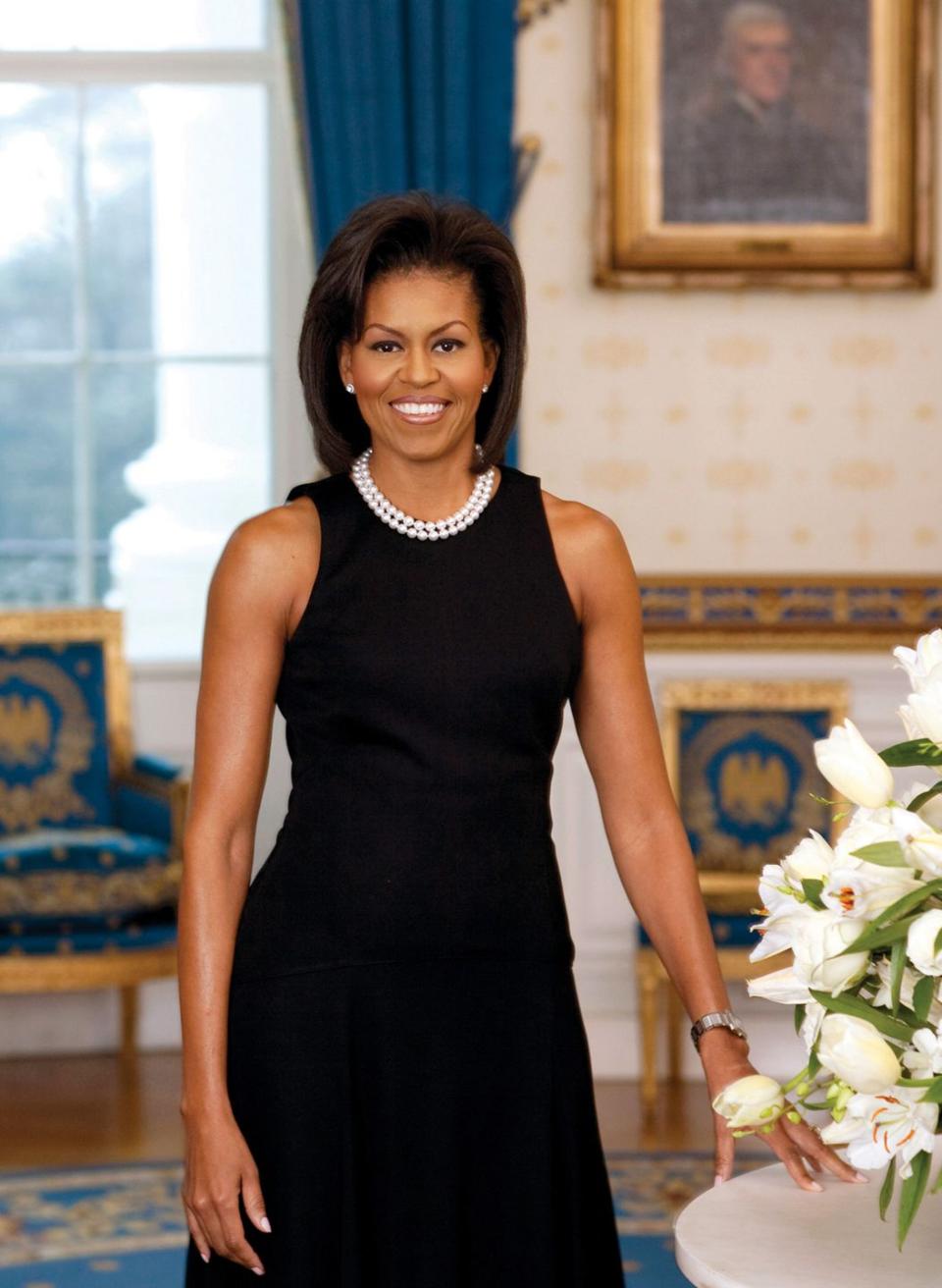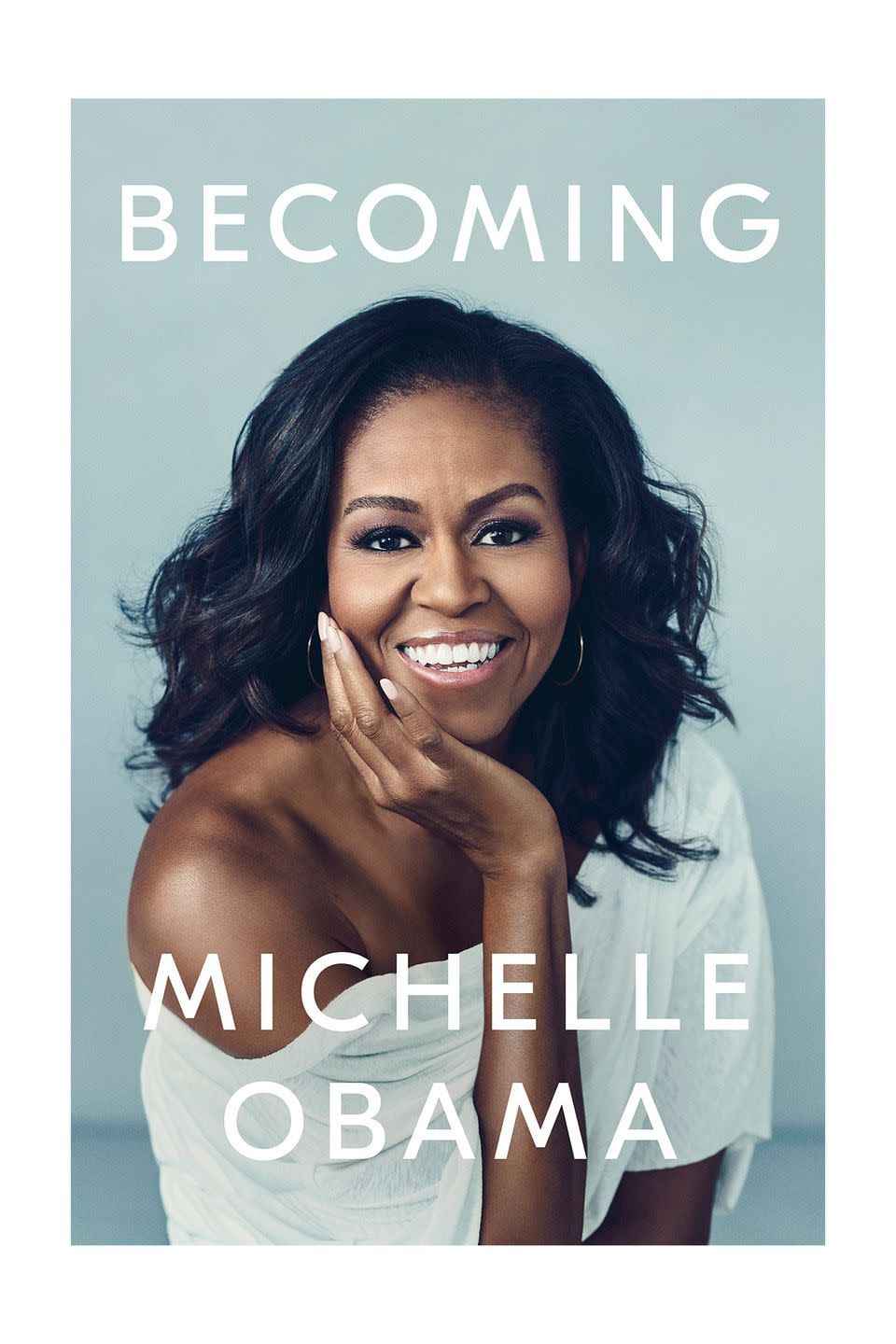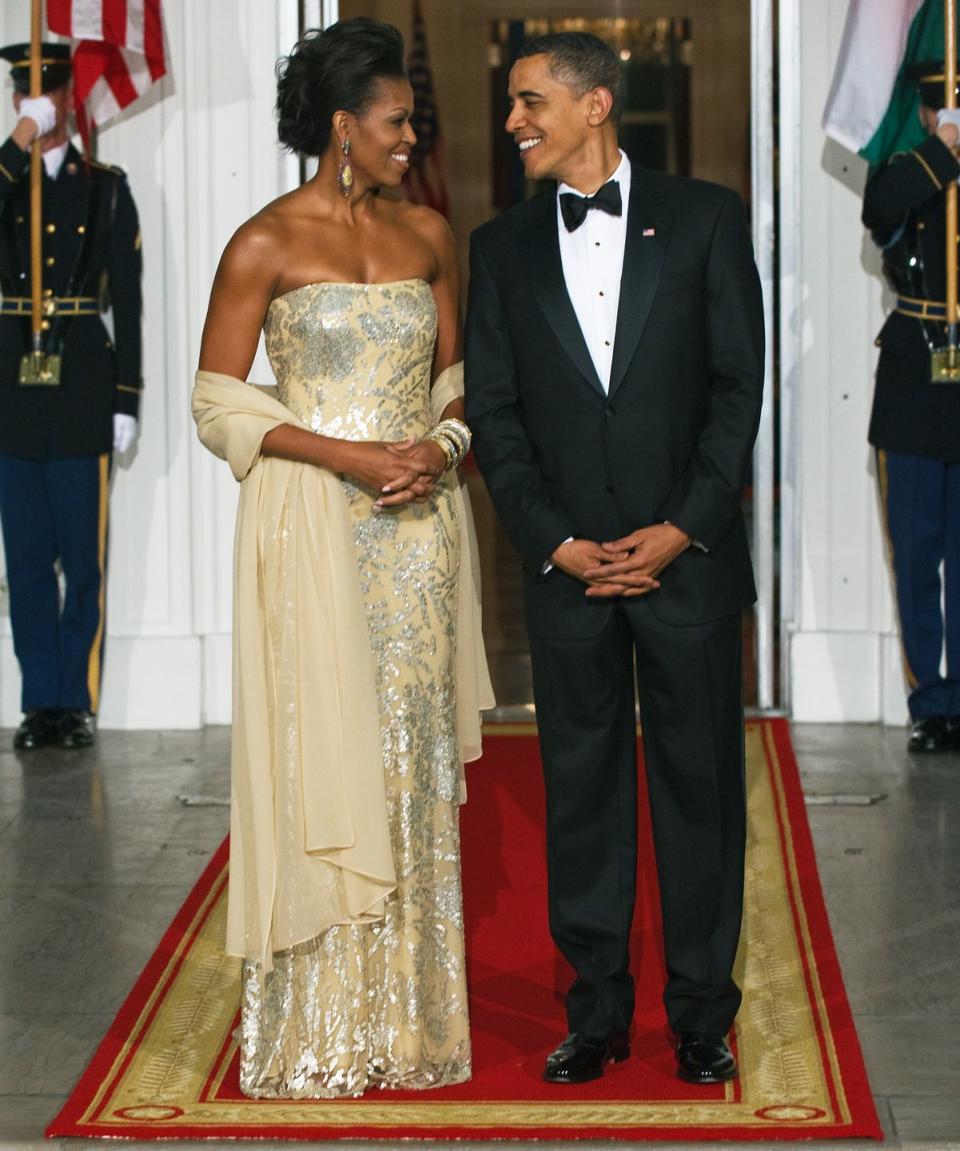Exclusive Excerpt: Michelle Obama Explains Her White House Style Strategy

In an exclusive excerpt from Becoming, Michelle Obama explains her White House style strategy.
Sometime during Barack’s campaign, people began paying attention to my clothes. Or at least the media paid attention, which provoked all manner of commentary across the internet. My pearls, my belts, my cardigans, my off-the-rack dresses from J. Crew, my apparently brave choice of white for an inaugural gown-all seemed to trigger a slew of opinions and instant feedback. I wore a sleeveless aubergine dress to Barack’s address to the joint session of Congress and a sleeveless black sheath dress for my official White House photo, and suddenly my arms were making headlines. Late in the summer of 2009, we went on a family trip in the Grand Canyon, and I was lambasted for an apparent lack of dignity when I was photographed getting off Air Force One (in 106-degree heat, I might add) dressed in a pair of shorts.

It seemed that my clothes mattered more to people than anything I had to say. In London, I’d stepped offstage after having been moved to tears while speaking to the girls at the Elizabeth Garrett Anderson School, only to learn that the first question directed to one of my staffers by a reporter had been “Who made her dress?”
This stuff got me down, but I tried to reframe it as an opportunity to learn, to use what power I could find inside a situation I’d never have chosen for myself. If people flipped through a magazine primarily to see the clothes I was wearing, I hoped they’d also see the military spouse standing next to me or read what I had to say about children’s health.

I knew a little about fashion, but not a lot. As a working mother, I’d really been too busy to put much thought into what I wore. During the campaign, I’d done most of my shopping at a boutique in Chicago where I’d had the good fortune of meeting a young sales associate named Meredith Koop. Meredith, who’d been raised in St. Louis, was sharp and knowledgeable about different designers. After Barack’s election, I was able to persuade her to move to Washington and work with me as a personal aide and wardrobe stylist. Very quickly, she also became a trusted friend.
A couple of times a month, Meredith would roll several big racks of clothing into my dressing room in the residence, and we’d spend an hour or two trying things on, pairing outfits with whatever was on my schedule in the coming weeks. I paid for all my own clothes and accessories-with the exception of some items like the couture-level gowns I wore to formal events, which were lent to me by the designers and would later be donated to the National Archives, thus adhering to White House ethics guidelines. When it came to my choices, I tried to be somewhat unpredictable, to prevent anyone from ascribing any sort of message to what I wore. It was a thin line to walk. I was supposed to stand out without overshadowing others, to blend in but not fade away. As a black woman, too, I knew I’d be criticized if I was perceived as being showy and high-end, and I’d also be criticized if I was too casual. So I mixed it up. I’d match a Michael Kors skirt with a T-shirt from Gap. I wore something from Target one day and Diane von Furstenberg the next. I wanted to draw attention to and celebrate American designers, especially those who were less established, even if it sometimes frustrated the old guard, including Oscar de la Renta, who was reportedly displeased that I wasn’t wearing his creations. For me, my choices were simply a way to use my curious relationship with the public gaze to boost a diverse set of up-and-comers.
Optics governed more or less everything in the political world, and I factored this into every outfit. It required time, thought, and money-more money than I’d spent on clothing ever before. It also required careful research by Meredith, particularly for foreign trips. She’d spend hours making sure the designers, colors, and styles we chose paid respect to the people and countries we visited. Meredith also shopped for Sasha and Malia ahead of public events, which added to the overall expense, but they, too, had the gaze upon them. I sighed sometimes, watching Barack pull the same dark suit out of his closet and head off to work without even needing a comb.

We were careful, Meredith and I, to always be prepared. In my dressing room, I’d put on a new dress and then squat, lunge, and pinwheel my arms, just to be sure I could move. Anything too restrictive, I put back on the rack. When I traveled, I brought backup outfits, anticipating shifts in weather and schedule, not to mention nightmare scenarios involving spilled wine or broken zippers. I learned, too, that it was important to always, no matter what, pack a dress suitable for a funeral, because Barack sometimes got called with little notice to be there as soldiers, senators, and world leaders were laid to rest.
I came to depend heavily on Meredith but also equally on Johnny Wright, my fast-talking, hard-laughing hurricane of a hairdresser, and Carl Ray, my soft-spoken and meticulous makeup artist. Together, the three of them (dubbed by my larger team “the trifecta”) gave me the confidence I needed to step out in public each day, all of us knowing that a slipup would lead to a flurry of ridicule and nasty comments. I never expected to be someone who hired others to maintain my image, and at first the idea was discomfiting. But I quickly found out a truth that no one talks about: Today, virtually every woman in public life-politicians, celebrities, you name it-has some version of Meredith, Johnny, and Carl. It’s all but a requirement, a built-in fee for our societal double standard.
This article originally appeared in the December 2018 issue of ELLE.
('You Might Also Like',)

